Blog Archives
Playstation 4 TV
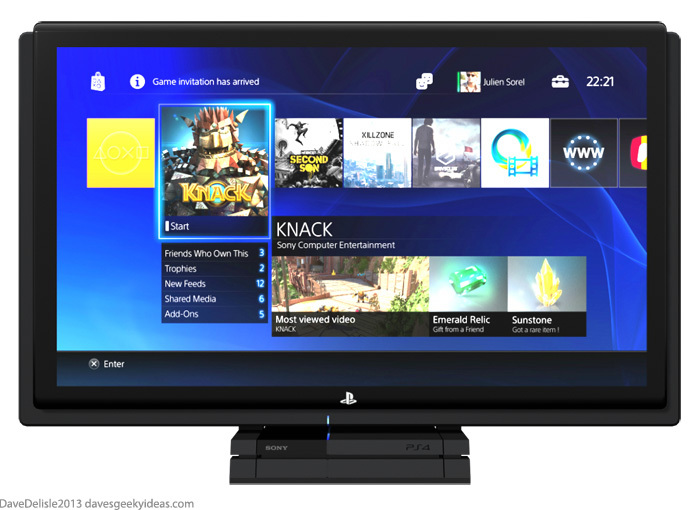
I’ve already gone on record saying TV manufacturers should be more cavalier when it comes to the design of their TVs, and I’m sad to say not much has changed on that front! But what about plain-looking TVs that compliment other products? Read the rest of this entry
Playstation 2 Vita Pipe Dream
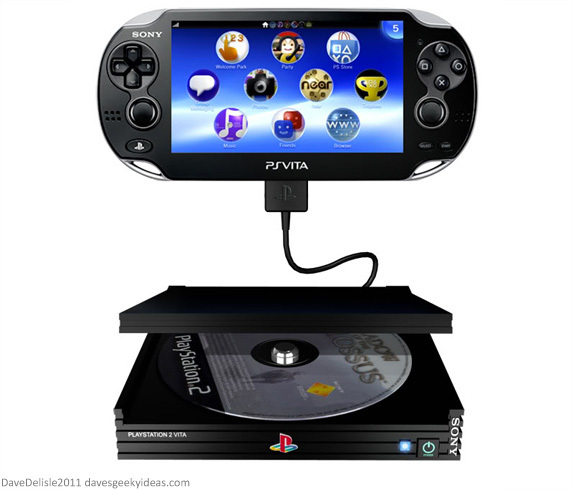
The PS Vita can’t catch a break when it comes to its sales numbers. There are a ton of reasons, and they are the usual suspects: lack of software, too pricey, bad economy, bought a Nintendo 3DS instead, etc. I’d like to offer my own reason, and that is the Playstation brand just isn’t the juggernaut it used to be. When the PSP was released, it rode the coattails of the can’t-lose PS2. A Playstation on-the-go had massive appeal 10 years ago. Now? Not quite as tantalizing a prospect, at least in this blogger’s opinion.
Given the reigns at Sony, my first act to rejuvenate the PS Vita would be to release a peripheral that would allow the transfer of PS1 and PS2 games to the Vita. Backwards compatibility for the masses! Software emulators would be installed on the PS Vita through a firmware update, aided by an external drive device to port over games (as depicted above).
I’m a huge fan of backwards compatibility (well, any added functionality in general). I was quite perplexed when Sony initially offered backwards compatibility for the PS3, only to remove it soon after. Looking back it made a lot of sense for Sony: PS2 was still selling like mad (and those actually made a profit), and the backwards compatibility inflated the PS3’s already-gargantuan cost. So it made sense for the fiscal health of the PS2 and PS3.
If backwards comparability can be removed for the well-being of a console platform, then why can’t it be introduced to help save a platform? Read the rest of this entry
Playstation 4 Flat Concept
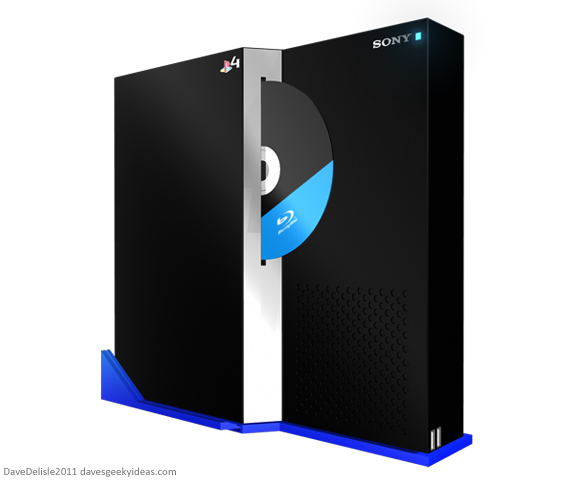
Compared to some of my other console designs, this is a very minimalist approach, one that uses my often-preached need to flatten electronics. Flat as in the same orientation as your LCD TV screen. If the TV can be a space-saver, then why can’t all your component electronics and consoles be the same? Your entertainment unit should only be about 7-10 inches deep in this blogger’s opinion.
With this Playstation 4 standing parallel to the wall, I gave it a ‘S’ shape design, so you can nicely feed it discs and the cords in the back. This way the cords are hidden from view thanks to the angular design:
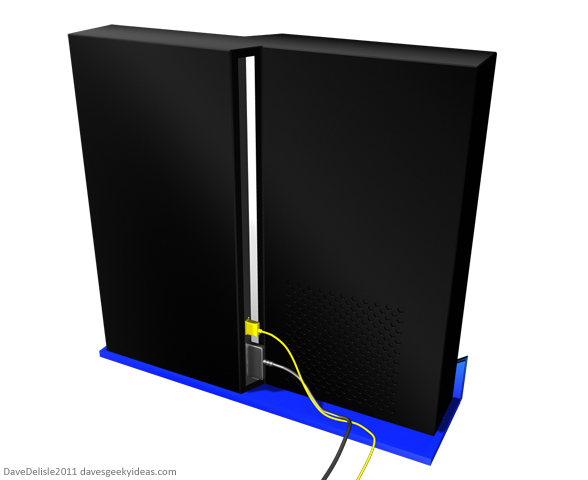
This is a very simple design, using a very low-key approach. Typically I would add LED lights and a few other bells and whistles. However in light of Sony’s latest PS3 console iteration, which reduces the LED lights and power consumption, I thought I’d take the same approach. One LED power indicator, and it’s pretty much a black slab. A hybrid of the PS2 and PS3.
My thoughts then turned to the faceplates of the first version of the Xbox 360. Having those graphics on the console certainly livened things up. With a big black box staring back at you, I thought I’d take a similar approach, and create a stand that would turn your Blu-Ray or PS4 game case into a faceplate of sorts, by providing a place for it to sit:
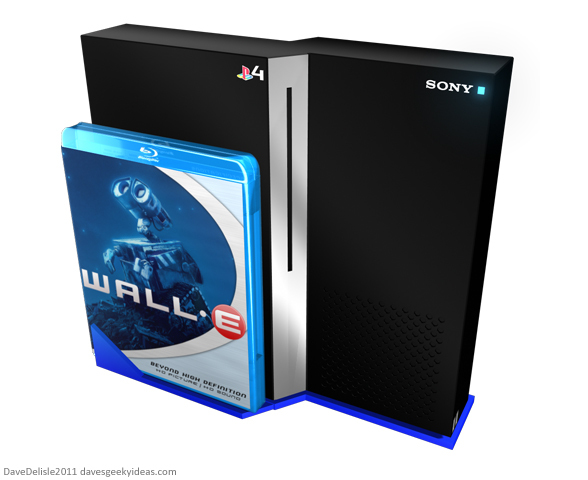
The stand would retract from the base stand, creating a perch for your jewel case. This feature acts like a theater marquee of sorts, announcing what you are currently playing or watching. Makes for a nice display. Also it’s very handy to have, as you’ll never misplace your case again.
No controller design here, but I it would likely be another DualShock for the PS4.
Insert Coin Game Console
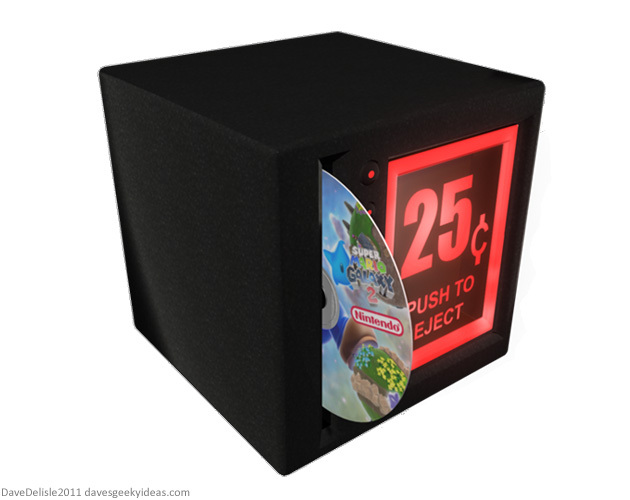
This is a fun concept: a video game console in the shape of a giant “Insert Coin” slot, much like what you’d find on an arcade cabinet. The coin slot operates as the disc slot.
